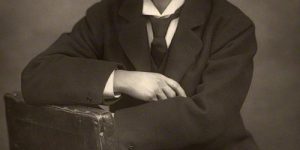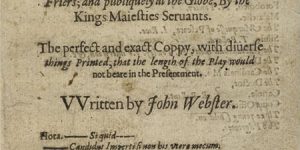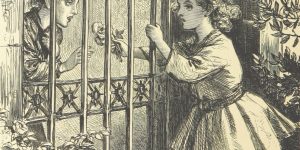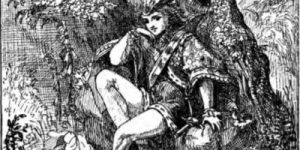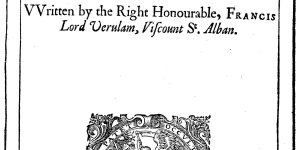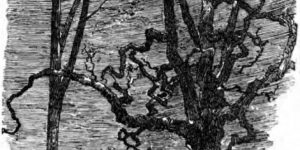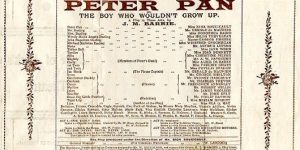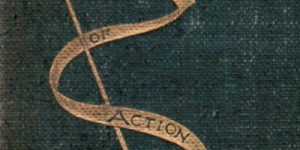The Great Boer War by Arthur Conan Doyle
The Great Boer War Preface To The Final Edition
The Great Boer War Chapter I. The Boer Nations
The Great Boer War Chapter II. The Cause Of Quarrel
The Great Boer War Chapter III. The Negotiations
The Great Boer War Chapter IV. The Eve Of War
The Great Boer War Chapter V. Talana Hill
The Great Boer War Chapter VI. Elandslaagte And Rietfontein
The Great Boer War Chapter VII. The Battle Of Ladysmith
The Great Boer War Chapter VIII. Lord Methuen’s Advance
The Great Boer War Chapter IX. Battle Of Magersfontein
The Great Boer War Chapter X. The Battle Of Stormberg
The Great Boer War Chapter XI. Battle Of Colenso
The Great Boer War Chapter XII. The Dark Hour
The Great Boer War Chapter XIII. The Siege Of Ladysmith
The Great Boer War Chapter XIV. The Colesberg Operations
The Great Boer War Chapter XV. Spion Kop
The Great Boer War Chapter XVI. Vaalkranz
The Great Boer War Chapter XVII. Buller’s Final Advance
The Great Boer War Chapter XVIII. The Siege And Relief Of Kimberley
The Great Boer War Chapter XIX. Paardeberg
The Great Boer War Chapter XX. Roberts’s Advance On Bloemfontein
The Great Boer War Chapter XXI. Strategic Effects Of Lord Roberts’s March
The Great Boer War Chapter XXII. The Halt At Bloemfontein
The Great Boer War Chapter XXIII. The Clearing Of The South-East
The Great Boer War Chapter XXIV. The Siege Of Mafeking
The Great Boer War Chapter XXV. The March On Pretoria
The Great Boer War Chapter XXVI. Diamond Hill—Rundle’s Operations
The Great Boer War Chapter XXVII. The Lines Of Communication
The Great Boer War Chapter XXVIII. The Halt At Pretoria
The Great Boer War Chapter XXIX. The Advance To Komatipoort
The Great Boer War Chapter XXX. The Campaign Of De Wet
The Great Boer War Chapter XXXI. The Guerilla Warfare In The Transvaal: Nooitgedacht
The Great Boer War Chapter XXXII. The Second Invasion Of Cape Colony
The Great Boer War Chapter XXXIII. The Northern Operations From January To April, 1901
The Great Boer War Chapter XXXIV. The Winter Campaign (April To September, 1901)
The Great Boer War Chapter XXXV. The Guerilla Operations In Cape Colony
The Great Boer War Chapter XXXVI. The Spring Campaign (September To December, 1901)
The Great Boer War Chapter XXXVII. The Campaign Of January To April, 1902
The Great Boer War Chapter XXXVIII. De La Rey’s Campaign Of 1902
The Great Boer War Chapter XXXIX. The End
The Great Boer War Chapter XVII. Buller’s Final Advance
The heroic moment of the siege of Ladysmith was that which witnessed the repulse of the great attack. The epic should have ended at that dramatic instant. But instead of doing so the story falls back to an anticlimax of crowded hospitals, slaughtered horses, and sporadic shell fire. For another six weeks of inactivity the brave garrison endured all the sordid evils which had steadily grown from inconvenience to misfortune and from misfortune to misery. Away in the south they heard the thunder of Buller’s guns, and from the hills round the town they watched with pale faces and bated breath the tragedy of Spion Kop, preserving a firm conviction that a very little more would have transformed it into their salvation. Their hearts sank with the sinking of the cannonade, and rose again with the roar of Vaalkranz. But Vaalkranz also failed them, and they waited on in the majesty of their hunger and their weakness for the help which was to come.
It has been already narrated how General Buller had made his three attempts for the relief of the city. The General who was inclined to despair was now stimulated by despatches from Lord Roberts, while his army, who were by no means inclined to despair, were immensely cheered by the good news from the Kimberley side. Both General and army prepared for a last supreme effort. This time, at least, the soldiers hoped that they would be permitted to burst their way to the help of their starving comrades or leave their bones among the hills which had faced them so long. All they asked was a fight to a finish, and now they were about to have one. General Buller had tried the Boers’ centre, he had tried their extreme right, and now he was about to try their extreme left. There were some obvious advantages on this side which make it surprising that it was not the first to be attempted. In the first place, the enemy’s main position upon that flank was at Hlangwane mountain, which is to the south of the Tugela, so that in case of defeat the river ran behind them. In the second, Hlangwane mountain was the one point from which the Boer position at Colenso could be certainly enfiladed, and therefore the fruits of victory would be greater on that flank than on the other. Finally, the operations could be conducted at no great distance from the railhead, and the force would be exposed to little danger of having its flank attacked or its communications cut, as was the case in the Spion Kop advance. Against these potent considerations there is only to be put the single fact that the turning of the Boer right would threaten the Freestaters’ line of retreat. On the whole, the balance of advantage lay entirely with the new attempt, and the whole army advanced to it with a premonition of success. Of all the examples which the war has given of the enduring qualities of the British troops there is none more striking than the absolute confidence and whole hearted delight with which, after three bloody repulses, they set forth upon another venture.
On February 9th the movements were started which transferred the greater part of the force from the extreme left to the centre and right. By the 11th Lyttelton’s (formerly Clery’s) second division and Warren’s fifth division had come eastward, leaving Burn Murdoch’s cavalry brigade to guard the Western side. On the 12th Lord Dundonald, with all the colonial cavalry, two battalions of infantry, and a battery, made a strong reconnaissance towards Hussar Hill, which is the nearest of the several hills which would have to be occupied in order to turn the position. The hill was taken, but was abandoned again by General Buller after he had used it for some hours as an observatory. A long-range action between the retiring cavalry and the Boers ended in a few losses upon each side.
What Buller had seen during the hour or two which he had spent with his telescope upon Hussar Hill had evidently confirmed him in his views, for two days later (February 14th) the whole army set forth for this point. By the morning of the 15th twenty thousand men were concentrated upon the sides and spurs of this eminence. On the 16th the heavy guns were in position, and all was ready for the advance.
Facing them now were the formidable Boer lines of Hlangwane Hill and Green Hill, which would certainly cost several thousands of men if they were to take them by direct storm. Beyond them, upon the Boer flank, were the hills of Monte Christo and Cingolo, which appeared to be the extreme outside of the Boer position. The plan was to engage the attention of the trenches in front by a terrific artillery fire and the threat of an assault, while at the same time sending the true flank attack far round to carry the Cingolo ridge, which must be taken before any other hill could be approached.
On the 17th, in the early morning, with the first tinge of violet in the east, the irregular cavalry and the second division (Lyttelton’s) with Wynne’s Brigade started upon their widely curving flanking march. The country through which they passed was so broken that the troopers led their horses in single file, and would have found themselves helpless in face of any resistance. Fortunately, Cingolo Hill was very weakly held, and by evening both our horsemen and our infantry had a firm grip upon it, thus turning the extreme left flank of the Boer position. For once their mountainous fortresses were against them, for a mounted Boer force is so mobile that in an open position, such as faced Methuen, it is very hard and requires great celerity of movement ever to find a flank at all. On a succession of hills, however, it was evident that some one hill must mark the extreme end of their line, and Buller had found it at Cingolo. Their answer to this movement was to throw their flank back so as to face the new position.
Even now, however, the Boer leaders had apparently not realised that this was the main attack, or it is possible that the intervention of the river made it difficult for them to send reinforcements. However that may be, it is certain that the task which the British found awaiting them on the 18th proved to be far easier than they had dared to hope. The honours of the day rested with Hildyard’s English Brigade (East Surrey, West Surrey, West Yorkshires, and 2nd Devons). In open order and with a rapid advance, taking every advantage of the cover—which was better than is usual in South African warfare—they gained the edge of the Monte Christo ridge, and then swiftly cleared the crest. One at least of the regiments engaged, the Devons, was nerved by the thought that their own first battalion was waiting for them at Ladysmith. The capture of the hill made the line of trenches which faced Buller untenable, and he was at once able to advance with Barton’s Fusilier Brigade and to take possession of the whole Boer position of Hlangwane and Green Hill. It was not a great tactical victory, for they had no trophies to show save the worthless debris of the Boer camps. But it was a very great strategical victory, for it not only gave them the whole south side of the Tugela, but also the means of commanding with their guns a great deal of the north side, including those Colenso trenches which had blocked the way so long. A hundred and seventy killed and wounded (of whom only fourteen were killed) was a trivial price for such a result. At last from the captured ridges the exultant troops could see far away the haze which lay over the roofs of Ladysmith, and the besieged, with hearts beating high with hope, turned their glasses upon the distant mottled patches which told them that their comrades were approaching.
By February 20th the British had firmly established themselves along the whole south bank of the river, Hart’s brigade had occupied Colenso, and the heavy guns had been pushed up to more advanced positions. The crossing of the river was the next operation, and the question arose where it should be crossed. The wisdom which comes with experience shows us now that it would have been infinitely better to have crossed on their extreme left flank, as by an advance upon this line we should have turned their strong Pieters position just as we had already turned their Colenso one. With an absolutely master card in our hand we refused to play it, and won the game by a more tedious and perilous process. The assumption seems to have been made (on no other hypothesis can one understand the facts) that the enemy were demoralised and that the positions would not be strongly held. Our flanking advantage was abandoned and a direct advance was ordered from Colenso, involving a frontal attack upon the Pieters position.
On February 21st Buller threw his pontoon bridge over the river near Colenso, and the same evening his army began to cross. It was at once evident that the Boer resistance had by no means collapsed. Wynne’s Lancashire Brigade were the first across, and found themselves hotly engaged before nightfall. The low kopjes in front of them were blazing with musketry fire. The brigade held its own, but lost the Brigadier (the second in a month) and 150 rank and file. Next morning the main body of the infantry was passed across, and the army was absolutely committed to the formidable and unnecessary enterprise of fighting its way straight to Ladysmith.
The force in front had weakened, however, both in numbers and in morale. Some thousands of the Freestaters had left in order to defend their own country from the advance of Roberts, while the rest were depressed by as much of the news as was allowed by their leaders to reach them. But the Boer is a tenacious fighter, and many a brave man was still to fall before Buller and White should shake hands in the High Street of Ladysmith.
The first obstacle which faced the army, after crossing the river, was a belt of low rolling ground, which was gradually cleared by the advance of our infantry. As night closed in the advance lines of Boers and British were so close to each other that incessant rifle fire was maintained until morning, and at more than one point small bodies of desperate riflemen charged right up to the bayonets of our infantry. The morning found us still holding our positions all along the line, and as more and more of our infantry came up and gun after gun roared into action we began to push our stubborn enemy northwards. On the 21st the Dorsets, Middlesex, and Somersets had borne the heat of the day. On the 22nd it was the Royal Lancasters, followed by the South Lancashires, who took up the running. It would take the patience and also the space of a Kinglake in this scrambling broken fight to trace the doings of those groups of men who strove and struggled through the rifle fire. All day a steady advance was maintained over the low kopjes, until by evening we were faced by the more serious line of the Pieter’s Hills. The operations had been carried out with a monotony of gallantry. Always the same extended advance, always the same rattle of Mausers and clatter of pom-poms from a ridge, always the same victorious soldiers on the barren crest, with a few crippled Boers before them and many crippled comrades behind. They were expensive triumphs, and yet every one brought them nearer to their goal. And now, like an advancing tide, they lapped along the base of Pieter’s Hill. Could they gather volume enough to carry themselves over? The issue of the long-drawn battle and the fate of Ladysmith hung upon the question.
Brigadier Fitzroy Hart, to whom the assault was entrusted, is in some ways as singular and picturesque a type as has been evolved in the war. A dandy soldier, always the picture of neatness from the top of his helmet to the heels of his well-polished brown boots, he brings to military matters the same precision which he affects in dress. Pedantic in his accuracy, he actually at the battle of Colenso drilled the Irish Brigade for half an hour before leading them into action, and threw out markers under a deadly fire in order that his change from close to extended formation might be academically correct. The heavy loss of the Brigade at this action was to some extent ascribed to him and affected his popularity; but as his men came to know him better, his romantic bravery, his whimsical soldierly humour, their dislike changed into admiration. His personal disregard for danger was notorious and reprehensible. ‘Where is General Hart?’ asked some one in action. ‘I have not seen him, but I know where you will find him. Go ahead of the skirmish line and you will see him standing on a rock,’ was the answer. He bore a charmed life. It was a danger to be near him. ‘Whom are you going to?’ ‘General Hart,’ said the aide-de-camp. ‘Then good-bye!’ cried his fellows. A grim humour ran through his nature. It is gravely recorded and widely believed that he lined up a regiment on a hill-top in order to teach them not to shrink from fire. Amid the laughter of his Irishmen, he walked through the open files of his firing line holding a laggard by the ear. This was the man who had put such a spirit into the Irish Brigade that amid that army of valiant men there were none who held such a record. ‘Their rushes were the quickest, their rushes were the longest, and they stayed the shortest time under cover,’ said a shrewd military observer. To Hart and his brigade was given the task of clearing the way to Ladysmith.
The regiments which he took with him on his perilous enterprise were the 1st Inniskilling Fusiliers, the 2nd Dublin Fusiliers, the 1st Connaught Rangers, and the Imperial Light Infantry, the whole forming the famous 5th Brigade. They were already in the extreme British advance, and now, as they moved forwards, the Durham Light Infantry and the 1st Rifle Brigade from Lyttelton’s Brigade came up to take their place. The hill to be taken lay on the right, and the soldiers were compelled to pass in single file under a heavy fire for more than a mile until they reached the spot which seemed best for their enterprise. There, short already of sixty of their comrades, they assembled and began a cautious advance upon the lines of trenches and sangars which seamed the brown slope above them.
For a time they were able to keep some cover, and the casualties were comparatively few. But now at last, as the evening sun threw a long shadow from the hills, the leading regiment, the Inniskillings, found themselves at the utmost fringe of boulders with a clear slope between them and the main trench of the enemy. Up there where the shrapnel was spurting and the great lyddite shells crashing they could dimly see a line of bearded faces and the black dots of the slouch hats. With a yell the Inniskillings sprang out, carried with a rush the first trench, and charged desperately onwards for the second one. It was a supremely dashing attack against a supremely steady resistance, for among all their gallant deeds the Boers have never fought better than on that February evening. Amid such a smashing shell fire as living mortals have never yet endured they stood doggedly, these hardy men of the veld, and fired fast and true into the fiery ranks of the Irishmen. The yell of the stormers was answered by the remorseless roar of the Mausers and the deep-chested shouts of the farmers. Up and up surged the infantry, falling, rising, dashing bull-headed at the crackling line of the trench. But still the bearded faces glared at them over the edge, and still the sheet of lead pelted through their ranks. The regiment staggered, came on, staggered again, was overtaken by supporting companies of the Dublins and the Connaughts, came on, staggered once more, and finally dissolved into shreds, who ran swiftly back for cover, threading their way among their stricken comrades. Never on this earth was there a retreat of which the survivors had less reason to be ashamed. They had held on to the utmost capacity of human endurance. Their Colonel, ten officers, and more than half the regiment were lying on the fatal hill. Honour to them, and honour also to the gallant Dutchmen who, rooted in the trenches, had faced the rush and fury of such an onslaught! Today to them, tomorrow to us—but it is for a soldier to thank the God of battles for worthy foes.
It is one thing, however, to repulse the British soldier and it is another to rout him. Within a few hundred yards of their horrible ordeal at Magersfontein the Highlanders reformed into a military body. So now the Irishmen fell back no further than the nearest cover, and there held grimly on to the ground which they had won. If you would know the advantage which the defence has over the attack, then do you come and assault this line of tenacious men, now in your hour of victory and exultation, friend Boer! Friend Boer did attempt it, and skilfully too, moving a flanking party to sweep the position with their fire. But the brigade, though sorely hurt, held them off without difficulty, and was found on the morning of the 24th to be still lying upon the ground which they had won.
Our losses had been very heavy, Colonel Thackeray of the Inniskillings, Colonel Sitwell of the Dublins, three majors, twenty officers, and a total of about six hundred out of 1200 actually engaged. To take such punishment and to remain undemoralised is the supreme test to which troops can be put. Could the loss have been avoided? By following the original line of advance from Monte Christo, perhaps, when we should have turned the enemy’s left. But otherwise no. The hill was in the way and had to be taken. In the war game you cannot play without a stake. You lose and you pay forfeit, and where the game is fair the best player is he who pays with the best grace. The attack was well prepared, well delivered, and only miscarried on account of the excellence of the defence. We proved once more what we had proved so often before, that all valour and all discipline will not avail in a frontal attack against brave coolheaded men armed with quick-firing rifles.
While the Irish Brigade assaulted Railway Hill an attack had been made upon the left, which was probably meant as a demonstration to keep the Boers from reinforcing their comrades rather than as an actual attempt upon their lines. Such as it was, however, it cost the life of at least one brave soldier, for Colonel Thorold, of the Welsh Fusiliers, was among the fallen. Thorold, Thackeray, and Sitwell in one evening. Who can say that British colonels have not given their men a lead?
The army was now at a deadlock. Railway Hill barred the way, and if Hart’s men could not carry it by assault it was hard to say who could. The 24th found the two armies facing each other at this critical point, the Irishmen still clinging to the slopes of the hill and the Boers lining the top. Fierce rifle firing broke out between them during the day, but each side was well covered and lay low. The troops in support suffered somewhat, however, from a random shell fire. Mr. Winston Churchill has left it upon record that within his own observation three of their shrapnel shells fired at a venture on to the reverse slope of a hill accounted for nineteen men and four horses. The enemy can never have known how hard those three shells had hit us, and so we may also believe that our artillery fire has often been less futile than it appeared.
General Buller had now realised that it was no mere rearguard action which the Boers were fighting, but that their army was standing doggedly at bay; so he reverted to that flanking movement which, as events showed, should never have been abandoned. Hart’s Irish Brigade was at present almost the right of the army. His new plan—a masterly one—was to keep Hart pinning the Boers at that point, and to move his centre and left across the river, and then back to envelope the left wing of the enemy. By this manoeuvre Hart became the extreme left instead of the extreme right, and the Irish Brigade would be the hinge upon which the whole army should turn. It was a large conception, finely carried out. The 24th was a day of futile shell fire—and of plans for the future. The heavy guns were got across once more to the Monte Christo ridge and to Hlangwane, and preparations made to throw the army from the west to the east. The enemy still snarled and occasionally snapped in front of Hart’s men, but with four companies of the 2nd Rifle Brigade to protect their flanks their position remained secure.
In the meantime, through a contretemps between our outposts and the Boers, no leave had been given to us to withdraw our wounded, and the unfortunate fellows, some hundreds of them, had lain between the lines in agonies of thirst for thirty-six hours—one of the most painful incidents of the campaign. Now, upon the 25th, an armistice was proclaimed, and the crying needs of the survivors were attended to. On the same day the hearts of our soldiers sank within them as they saw the stream of our wagons and guns crossing the river once more. What, were they foiled again? Was the blood of these brave men to be shed in vain? They ground their teeth at the thought. The higher strategy was not for them, but back was back and forward was forward, and they knew which way their proud hearts wished to go.
The 26th was occupied by the large movements of troops which so complete a reversal of tactics necessitated. Under the screen of a heavy artillery fire, the British right became the left and the left the right. A second pontoon bridge was thrown across near the old Boer bridge at Hlangwane, and over it was passed a large force of infantry, Barton’s Fusilier Brigade, Kitchener’s (vice Wynne’s, vice Woodgate’s) Lancashire Brigade, and two battalions of Norcott’s (formerly Lyttelton’s) Brigade. Coke’s Brigade was left at Colenso to prevent a counter attack upon our left flank and communications. In this way, while Hart with the Durhams and the 1st Rifle Brigade held the Boers in front, the main body of the army was rapidly swung round on to their left flank. By the morning of the 27th all were in place for the new attack.
Opposite the point where the troops had been massed were three Boer hills; one, the nearest, may for convenience sake be called Barton’s Hill. As the army had formerly been situated the assault upon this hill would have been a matter of extreme difficulty; but now, with the heavy guns restored to their commanding position, from which they could sweep its sides and summits, it had recovered its initial advantage. In the morning sunlight Barton’s Fusiliers crossed the river, and advanced to the attack under a screaming canopy of shells. Up they went and up, darting and crouching, until their gleaming bayonets sparkled upon the summit. The masterful artillery had done its work, and the first long step taken in this last stage of the relief of Ladysmith. The loss had been slight and the advantage enormous. After they had gained the summit the Fusiliers were stung and stung again by clouds of skirmishers who clung to the flanks of the hill, but their grip was firm and grew firmer with every hour.
Of the three Boer hills which had to be taken the nearest (or eastern one) was now in the hands of the British. The furthest (or western one) was that on which the Irish Brigade was still crouching, ready at any moment for a final spring which would take them over the few hundred yards which separated them from the trenches. Between the two intervened a central hill, as yet untouched. Could we carry this the whole position would be ours. Now for the final effort! Turn every gun upon it, the guns of Monte Christo, the guns of Hlangwane! Turn every rifle upon it—the rifles of Barton’s men, the rifles of Hart’s men, the carbines of the distant cavalry! Scalp its crown with the machine-gun fire! And now up with you, Lancashire men, Norcott’s men! The summit or a glorious death, for beyond that hill your suffering comrades are awaiting you! Put every bullet and every man and all of fire and spirit that you are worth into this last hour; for if you fail now you have failed for ever, and if you win, then when your hairs are white your blood will still run warm when you think of that morning’s work. The long drama had drawn to an end, and one short day’s work is to show what that end was to be.
But there was never a doubt of it. Hardly for one instant did the advance waver at any point of its extended line. It was the supreme instant of the Natal campaign, as, wave after wave, the long lines of infantry went shimmering up the hill. On the left the Lancasters, the Lancashire Fusiliers, the South Lancashires, the York and Lancasters, with a burr of north country oaths, went racing for the summit. Spion Kop and a thousand comrades were calling for vengeance. ‘Remember, men, the eyes of Lancashire are watching you,’ cried the gallant MacCarthy O’Leary. The old 40th swept on, but his dead body marked the way which they had taken. On the right the East Surrey, the Cameronians, the 3rd Rifles, the 1st Rifle Brigade, the Durhams, and the gallant Irishmen, so sorely stricken and yet so eager, were all pressing upwards and onwards. The Boer fire lulls, it ceases—they are running! Wild hat-waving men upon the Hlangwane uplands see the silhouette of the active figures of the stormers along the sky-line and know that the position is theirs. Exultant soldiers dance and cheer upon the ridge. The sun is setting in glory over the great Drakensberg mountains, and so also that night set for ever the hopes of the Boer invaders of Natal. Out of doubt and chaos, blood and labour, had come at last the judgment that the lower should not swallow the higher, that the world is for the man of the twentieth and not of the seventeenth century. After a fortnight of fighting the weary troops threw themselves down that night with the assurance that at last the door was ajar and the light breaking through. One more effort and it would be open before them.
Behind the line of hills which had been taken there extended a great plain as far as Bulwana—that evil neighbour who had wrought such harm upon Ladysmith. More than half of the Pieters position had fallen into Buller’s hands on the 27th, and the remainder had become untenable. The Boers had lost some five hundred in killed, wounded, and prisoners. [Footnote: Accurate figures will probably never be obtained, but a well-known Boer in Pretoria informed me that Pieters was the most expensive fight to them of the whole war. ] It seemed to the British General and his men that one more action would bring them safely into Ladysmith.
But here they miscalculated, and so often have we miscalculated on the optimistic side in this campaign that it is pleasing to find for once that our hopes were less than the reality. The Boers had been beaten—fairly beaten and disheartened. It will always be a subject for conjecture whether they were so entirely on the strength of the Natal campaign, or whether the news of the Cronje disaster from the western side had warned them that they must draw in upon the east. For my own part I believe that the honour lies with the gallant men of Natal, and that, moving on these lines, they would, Cronje or no Cronje, have forced their way in triumph to Ladysmith.
And now the long-drawn story draws to a swift close. Cautiously feeling their way with a fringe of horse, the British pushed over the great plain, delayed here and there by the crackle of musketry, but finding always that the obstacle gave way and vanished as they approached it. At last it seemed clear to Dundonald that there really was no barrier between his horsemen and the beleaguered city. With a squadron of Imperial Light Horse and a squadron of Natal Carabineers he rode on until, in the gathering twilight, the Ladysmith picket challenged the approaching cavalry, and the gallant town was saved.
It is hard to say which had shown the greater endurance, the rescued or their rescuers. The town, indefensible, lurking in a hollow under commanding hills, had held out for 118 days. They had endured two assaults and an incessant bombardment, to which, towards the end, owing to the failure of heavy ammunition, they were unable to make any adequate reply. It was calculated that 16, 000 shells had fallen within the town. In two successful sorties they had destroyed three of the enemy’s heavy guns. They had been pressed by hunger, horseflesh was already running short, and they had been decimated by disease. More than 2000 cases of enteric and dysentery had been in hospital at one time, and the total number of admissions had been nearly as great as the total number of the garrison. One-tenth of the men had actually died of wounds or disease. Ragged, bootless, and emaciated, there still lurked in the gaunt soldiers the martial spirit of warriors. On the day after their relief 2000 of them set forth to pursue the Boers. One who helped to lead them has left it on record that the most piteous sight that he has ever seen was these wasted men, stooping under their rifles and gasping with the pressure of their accoutrements, as they staggered after their retreating enemy. A Verestschagen might find a subject these 2000 indomitable men with their emaciated horses pursuing a formidable foe. It is God’s mercy they failed to overtake them.
If the record of the besieged force was great, that of the relieving army was no less so. Through the blackest depths of despondency and failure they had struggled to absolute success. At Colenso they had lost 1200 men, at Spion Kop 1700, at Vaalkranz 400, and now, in this last long-drawn effort, 1600 more. Their total losses were over 5000 men, more than 20 per cent of the whole army. Some particular regiments had suffered horribly. The Dublin and Inniskilling Fusiliers headed the roll of honour with only five officers and 40 per cent of the men left standing. Next to them the Lancashire Fusiliers and the Royal Lancasters had been the hardest hit. It speaks well for Buller’s power of winning and holding the confidence of his men that in the face of repulse after repulse the soldiers still went into battle as steadily as ever under his command.
On March 3rd Buller’s force entered Ladysmith in state between the lines of the defenders. For their heroism the Dublin Fusiliers were put in the van of the procession, and it is told how, as the soldiers who lined the streets saw the five officers and small clump of men, the remains of what had been a strong battalion, realising, for the first time perhaps, what their relief had cost, many sobbed like children. With cheer after cheer the stream of brave men flowed for hours between banks formed by men as brave. But for the purposes of war the garrison was useless. A month of rest and food would be necessary before they could be ready to take the field once more.
So the riddle of the Tugela had at last been solved. Even now, with all the light which has been shed upon the matter, it is hard to apportion praise and blame. To the cheerful optimism of Symons must be laid some of the blame of the original entanglement; but man is mortal, and he laid down his life for his mistake. White, who had been but a week in the country, could not, if he would, alter the main facts of the military situation. He did his best, committed one or two errors, did brilliantly on one or two points, and finally conducted the defence with a tenacity and a gallantry which are above all praise. It did not, fortunately, develop into an absolutely desperate affair, like Massena’s defence of Genoa, but a few more weeks would have made it a military tragedy. He was fortunate in the troops whom he commanded—half of them old soldiers from India—[Footnote: An officer in high command in Ladysmith has told me, as an illustration of the nerve and discipline of the troops, that though false alarms in the Boer trenches were matters of continual occurrence from the beginning to the end of the siege, there was not one single occasion when the British outposts made a mistake.]—and exceedingly fortunate in his officers, French (in the operations before the siege), Archibald Hunter, Ian Hamilton, Hedworth Lambton, Dick-Cunyngham, Knox, De Courcy Hamilton, and all the other good men and true who stood (as long as they could stand) by his side. Above all, he was fortunate in his commissariat officers, and it was in the offices of Colonels Ward and Stoneman as much as in the trenches and sangars of Caesar’s Camp that the siege was won.
Buller, like White, had to take the situation as he found it. It is well known that his own belief was that the line of the Tugela was the true defence of Natal. When he reached Africa, Ladysmith was already beleaguered, and he, with his troops, had to abandon the scheme of direct invasion and to hurry to extricate White’s division. Whether they might not have been more rapidly extricated by keeping to the original plan is a question which will long furnish an excellent subject for military debate. Had Buller in November known that Ladysmith was capable of holding out until March, is it conceivable that he, with his whole army corps and as many more troops as he cared to summon from England, would not have made such an advance in four months through the Free State as would necessitate the abandonment of the sieges both of Kimberley and of Ladysmith? If the Boers persisted in these sieges they could not possibly place more than 20,000 men on the Orange River to face 60, 000 whom Buller could have had there by the first week in December. Methuen’s force, French’s force, Gatacre’s force, and the Natal force, with the exception of garrisons for Pietermaritzburg and Durban, would have assembled, with a reserve of another sixty thousand men in the colony or on the sea ready to fill the gaps in his advance. Moving over a flat country with plenty of flanking room, it is probable that he would have been in Bloemfontein by Christmas and at the Vaal River late in January. What could the Boers do then? They might remain before Ladysmith, and learn that their capital and their gold mines had been taken in their absence. Or they might abandon the siege and trek back to defend their own homes. This, as it appears to a civilian critic, would have been the least expensive means of fighting them; but after all the strain had to come somewhere, and the long struggle of Ladysmith may have meant a more certain and complete collapse in the future. At least, by the plan actually adopted we saved Natal from total devastation, and that must count against a great deal.
Having taken his line, Buller set about his task in a slow, deliberate, but pertinacious fashion. It cannot be denied, however, that the pertinacity was largely due to the stiffening counsel of Roberts and the soldierly firmness of White who refused to acquiesce in the suggestion of surrender. Let it be acknowledged that Buller’s was the hardest problem of the war, and that he solved it. The mere acknowledgment goes far to soften criticism. But the singular thing is that in his proceedings he showed qualities which had not been generally attributed to him, and was wanting in those very points which the public had imagined to be characteristic of him. He had gone out with the reputation of a downright John Bull fighter, who would take punishment or give it, but slog his way through without wincing. There was no reason for attributing any particular strategical ability to him. But as a matter of fact, setting the Colenso attempt aside, the crossing for the Spion Kop enterprise, the withdrawal of the compromised army, the Vaalkranz crossing with the clever feint upon Brakfontein, the final operations, and especially the complete change of front after the third day of Pieters, were strategical movements largely conceived and admirably carried out. On the other hand, a hesitation in pushing onwards, and a disinclination to take a risk or to endure heavy punishment, even in the case of temporary failure, were consistent characteristics of his generalship. The Vaalkranz operations are particularly difficult to defend from the charge of having been needlessly slow and half-hearted. This ‘saturnine fighter,’ as he had been called, proved to be exceedingly sensitive about the lives of his men—an admirable quality in itself, but there are occasions when to spare them to-day is to needlessly imperil them tomorrow. The victory was his, and yet in the very moment of it he displayed the qualities which marred him. With two cavalry brigades in hand he did not push the pursuit of the routed Boers with their guns and endless streams of wagons. It is true that he might have lost heavily, but it is true also that a success might have ended the Boer invasion of Natal, and the lives of our troopers would be well spent in such a venture. If cavalry is not to be used in pursuing a retiring enemy encumbered with much baggage, then its day is indeed past.
The relief of Ladysmith stirred the people of the Empire as nothing, save perhaps the subsequent relief of Mafeking, has done during our generation. Even sober unemotional London found its soul for once and fluttered with joy. Men, women, and children, rich and poor, clubman and cabman, joined in the universal delight. The thought of our garrison, of their privations, of our impotence to relieve them, of the impending humiliation to them and to us, had lain dark for many months across our spirits. It had weighed upon us, until the subject, though ever present in our thoughts, was too painful for general talk. And now, in an instant, the shadow was lifted. The outburst of rejoicing was not a triumph over the gallant Boers. But it was our own escape from humiliation, the knowledge that the blood of our sons had not been shed in vain, above all the conviction that the darkest hour had now passed and that the light of peace was dimly breaking far away—that was why London rang with joy bells that March morning, and why those bells echoed back from every town and hamlet, in tropical sun and in Arctic snow, over which the flag of Britain waved.
The Great Boer War Chapter XVIII. The Siege And Relief Of Kimberley

